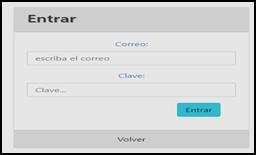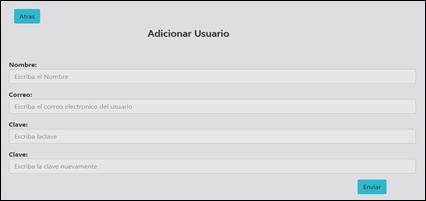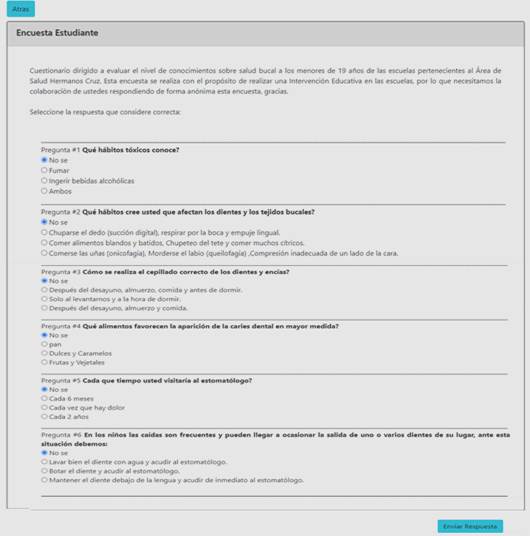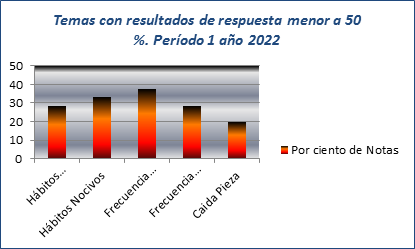Mi SciELO
Servicios Personalizados
Articulo
Indicadores
-
 Citado por SciELO
Citado por SciELO
Links relacionados
-
 Similares en
SciELO
Similares en
SciELO
Compartir
Revista de Ciencias Médicas de Pinar del Río
versión On-line ISSN 1561-3194
Rev Ciencias Médicas vol.27 no.3 Pinar del Río mayo.-jun. 2023 Epub 01-Mayo-2023
Articles
SAIN: Computer system to support the population-based study of stomatology in children under 19 years of age
1University of Pinar del Río. "Hermanos Saiz Montes de Oca". Pinar del Río, Cuba.
Introduction:
the Hermanos Cruz Polyclinic in the municipality of Pinar del Río, provides sto-matological care to the educational centers that converge in its Health Area, collecting a group of data that allow the identification of causes and risk factors that favor the incidence of dental caries in children under 19 years of age. This information is collected manually and processed in Excel spreadsheets, this process is cumbersome, requires time to analyze it and conclude on how to direct educational and pre-ventive intervention plans in a differentiated way, according to information obtained from the schoolchildren and their educational needs.
Objective:
to develop a computer system to support the population-based study of stomatology of schoolchildren attended by the Hermano Cruz Polyclinic, which contributes to the management of information and provides reports.
Methods:
a technological development type research was carried out, applying research methods at theoretical levels such as historical-logical, analytical-synthetic, induction-deduction and modeling; at empirical levels, documentary analysis and interview, statistics, as well as the Extreme Programmin development methodology and a group of in-formatics tools to achieve the functionalities of the main modules of the software.
Results:
it was possible to design and implement a computer tool that allowed managing the information related to the population study of stomatology in children under 19, generating reports and graphs that enrich the statistics that govern the implementation of educational and preventive strategies.
Conclusions:
the information provided by the application makes it possible to analyze the causes and risk factors in oral health.
Key words: DENTAL CARE; HEALTH AREA; DENTAL CAVITIES; COMPUTER SYSTEM
INTRODUCTION
The area of medical sciences does not escape the phenomenon of technological development, the impact of health technologies in clinical practice, as well as in the organization and provision of services can be described as spectacular, providing the possibility of having more and better preventive, diagnostic, therapeutic and rehabilitative methods. Within Health, stomatology is a precision science, which today is advancing towards a stage of specialization, however, it must be considered that technologies are often imported from other more developed nations.1
In recent years, developed countries such as Japan, Germany, Switzerland and lately China are heading towards an era of subspecialty and above all of technological innovation in dental equipment, which are beginning to replace maneuvers that were normally performed by specialized professionals. In the area of new medical technologies of unquestionable diagnostic or therapeutic efficacy are progressively being incorporated into health care services.2
The Cuban Revolution is a creative and renovating process of many concepts, which has not only made a remarkable effort to develop knowledge, education, culture, but also to generously share its advances with other peoples who need them, whereby it has achieved great autochthonous conquests of the process, of absolute priority given to the people's health, together with the efforts to early incorporate state-of-the-art technologies is just one example of how health levels have been reached that are comparable in many cases to those of developed countries.3,4 The field of health is probably the best example of Cuba's humanistic vocation of universal projection, which is recognized in the international context.
On the other hand, in Cuba's scientific and technological policy, the intention to contribute to the social development of the country stands out, and in particular the efforts made by the Cuban state to support the informatization of society, which is a fact and concrete actions are being developed that are necessary to conclude the initial stage of electronic government, not only to create the platforms, but also to operate with good practices, provide digital services to the population and interact with the people.5,6 In the health field, work has been done to respond to the growing information needs of health professionals, giving them access to new information technologies, in addition to the situation of Stomatology in the contemporary world, which requires society to recognize technological needs as a key factor for its development.7
Since its creation, the National Program of Comprehensive Stomatologic Care has had the purpose of grouping health actions, based on purposes and objectives aimed at keeping people healthy, as well as care for children under 19 years of age in educational centers, so that all kinds of stomatologic actions are carried out on the entire student body.8) In the 1970s, a program for school children was introduced, which included an annual clinical oral examination of all children from 2 to 11 years of age by a stomatologist in their schools or in the same services where curative care was provided, later extending to the 12-14 age group and at the end of the 1990s up to 18 years of age through the incremental system. This program included not only examination and treatment, but also fluoride applications and the prevention of other disorders such as facial malformations and malocclusions.9
This system is based on the Comprehensive General Stomatology Model, which emphasized actions aimed at health promotion and disease prevention. Stomatological care is one of the Prioritized Strategies of MINSAP, with a high implication in the state of health of the population and in the social political order. It also constitutes the set of organizational, operational and control activities to be followed by the different levels of the National Health System in its network of stomatological institutions aimed at improving the general oral health of the population and its satisfaction.
In the Health Area of Reparto Hermanos Cruz there are several schools of different levels of education, which are attended by doctors in General Comprehensive Stomatology, specialists in 1st degree of the Polyclinic of this area, with the objective of diagnosing, treating and preventing the incidence of caries and other pathologies in the students of these centers who do not exceed 19 years of age. In these educational institutions, specialists carry out studies to diagnose the causes of the incidence of caries in students, through the analysis of data that are collected in the clinical histories of these patients, where they collect stomatological history, drug allergies, frequency of brushing, toxic habits, characteristics of their diet and characteristics of the oral cavity among others, in addition to the application of surveys to all students.
From the analysis of the data collected in the clinical histories and surveys, it is possible to determine elements that are of great help to the specialist to diagnose certain conditions and apply effective and personalized treatments according to the pathology and individual characteristics of each patient, as well as to develop educational and preventive programs.(10, 11)
All this information is currently collected manually, making it very cumbersome to control, organize and analyze the data. This problem leads to delays in consultation time and the handling of large volumes of information on paper, making it difficult to analyze the data properly and arrive at conclusions that lead to results in terms of the effectiveness of the treatments applied and the educational and preventive strategies to be implemented. The existence of tools provided by information and communication technologies can support the management, analysis and storage of data with higher quality.
Based on the above analysis, the following scientific problem arises: how to contribute to improve the management and analysis of the information derived from the population-based study of Stomatology in children under 19 years of age at the Hermanos Cruz Polyclinic?
The general objective is to develop a computer system to support the population-based study of Stomatology in children under 19 years of age at the Hermanos Cruz Polyclinic, which contributes to the management of information and provides detailed reports for its analysis.
The scientific novelty is based on the deployment of a web application to manage the information of the surveys carried out to the students of the educational centers attended by the Hermanos Cruz Polyclinic in the province of Pinar del Río and to provide detailed information on the results of these surveys, facilitating their later analysis by the doctors.
METHODS
During the development of the research, which obeys a technological development project, the Dialectical-Materialist method was used as the general method of scientific research, which allowed the selection of the methods of the theoretical and empirical levels, as well as the statistical ones.
Among the methods of the theoretical level applied are the historical-logical, analytical-synthetic, inductive-deductive and modeling. In the case of the historical-logical method, it allowed explaining the history and evolution of the National Program of Integral Stomatological Care and the foundations that support it. In addition, the analytical-synthetic method was applied throughout the research process to gain knowledge of the program and the actions carried out by doctors of General Stomatology in a health area with schoolchildren, making it possible to understand the problem and reveal the characteristics of the data collected on these patients.
It was also necessary to apply the inductive-deductive method to generalize and obtain global or group conclusions, based on the analogous behavior of the information of particular cases in the schoolchildren, as well as the modeling in the design and implementation of the software that through the study of the information collected made possible the construction of a domain model that relates all the concepts that are carried out in the business, for a better understanding of it by the development team and the construction of the data model to define the structure of the database that stores the information obtained from the schoolchildren.
The empirical methods used were documentary analysis and interviews. The documentary analysis allowed the study and analysis of the data collected in the clinical histories of the patients and the surveys applied to them. On the other hand, the interview allowed to deepen in the processes that are carried out in the Hermanos Cruz Policlinic, with respect to the population study of children under 19 years of age, as well as to carry out an efficient requirement engineering to achieve the satisfaction of the clients' needs.
Regarding the statistical methods, descriptive statistics were used in data processing, from organizing and summarizing the information collected in the surveys, to present it in frequency tables and show it in graphical form, as well as to base it analytically.
In addition, the design and implementation of the application took into account design principles related to existing health systems and the creativity of the Logo designer. In the implementation, several technologies, tools and programming languages to be used were taken into account, which led to a thorough study of the most feasible ones, taking into account the advantages and disadvantages of their use. It was decided to use the XP (Extreme Programming) development methodology, which in a fast, concrete and continuous way allows feedback through short cycles, which is vital for the successful development of the application and reduces the risk of not pleasing the client.(12
These rules are specifically oriented to test-driven development, planning strategy, user in-situ, pair programming (as a golden rule for successful projects), small deliverables, simple design and collective code ownership.
UML (Unified Modeling Language) was also used as modeling language and the case EA (Enterprise Architect) tool for the construction of the artifacts proposed by the methodology. The implementation was developed with the use of Laravel as development frame-work since it allows the use of a refined and expressive syntax to create code in a simple way and allowing a multitude of functionalities and MySQL as database manager.
RESULTS
SAIN was created, a web application in charge of managing all the information collected in the surveys applied to children under 19 years of age in the Hermanos Cruz Health Area. The application records data from the educational centers and the doctors who attend them, allows managing the data related to the survey questions, as well as generating reports and providing graphs that enrich the statistics that guide and direct the implementation of educational and preventive strategies.
Description of the main functionalities of the application
The main interface shows the application's logo and a brief description (Fig. 1).
To access the application, the user must use his or her login credentials (user and password). The roles managed during the development of the system were: administrator and doctor and student. User management is done only by the system administrator, so in order to create the SAIN user, the administrator must first be asked to create the SAIN user. In addition, a Doctor user will have access to the information managed about the survey and the educational centers, as well as to the graphs and statistical reports; similarly, student users will only have access to the survey form. (Fig. 2)
Among the most important functional requirements of the system we can point out Manage Users, this requirement can only be performed by the Administrator User, it allows to manage the Doctor system user, since Student does not use credentials (Fig. 3).
The Doctor is also in charge of creating the educational centers, providing the general information. (Fig. 4)
The functional requirement to create Survey, registers the following data: Doctor, Period, Year, Grades, Subject, as well as the data provided by the student when filling the survey (Fig. 5).
Reports generated
The reports generated from the application correspond to information that should be provided by the surveys applied in the different periods, which are related to:
Graphs generated
The graphs generated by the application allow to represent the information stored in the database. These are accessible through the Reports Menu of the SAIN application, and among the most relevant are: Topics with response results of less than 50 % in a period, harmful habits by center and grade.(Fig. 6)
DISCUSSION
As part of the study of the object of the research, a review was made of other international and national software or computer systems that record and control information on related topics such as the clinical histories of patients in general or specific to a type of disease, as well as patients seen in general stomatology or dental prosthesis consultations. The characteristics of the following software are summarized below:
The common characteristic of these software programs is that the registration and control of patient data was done manually, which made it difficult to analyze and make decisions, and in most cases a web application is proposed; in the case of SA-GISTROKE, in addition to data control, it analyzes the data and provides the results in graphic form. The aspects analyzed in these software were requirements taken into consideration in the elaboration of the computer system developed.
In the specific case of the information recorded in the analyzed software, it is related to the patients' electronic medical records, which are very useful, although in most cases they are systems that collect patient data in a general way without specifying any service. In the application developed, what is recorded is the information provided by the students of the educational centers that are attended in a health area when filling out the stomatological survey that is applied to them, whose analysis by the computer system offers the possibility of directing educational and preventive intervention plans, in a differentiated manner according to the information obtained from the students and their educational needs, this being in correspondence with the National Program of Stomatological Attention in Cuba.
This program has as a priority the attention of children under 19 years of age. In response to this, this research was carried out in Pinar del Río in the educational centers of the action area of the Health Area of the Hermanos Cruz District, with the objective of determining the level of knowledge of the students regarding oral health and thus directing the educational intervention plans towards the most difficult topics.
The educational work developed with the students of these centers is based on the identification of the causes and risk factors that provoke the incidence of caries in this field of action. This identification is done through a written survey that is applied and the data obtained are collected, organized and analyzed by means of models in Excel sheets, by means of which the results are tabulated. This becomes cumbersome and time-consuming for the health specialists in charge of this activity.
This is why the need arose to develop the SAIN computer application, which is a system that allows the management of information related to the creation of surveys and their application. It also provides reports that allow analysis and decision making for the elaboration of educational intervention plans in the centers.
The application was developed with free languages and tools, which makes it possible to use and deploy it without difficulty in the educational centers, as well as to process information more quickly and to respond to tasks that would require a lot of time manually. It also makes it possible to handle large volumes of information due to the speed with which data can be processed and at the same time makes it possible to produce reports and graphs that demonstrate the students' level of knowledge. It also reduces costs in terms of personnel and paper, since this activity was previously managed by several members of the center, and is now generated directly by the computer system.
The social impact of SAIN is considerable since it is a tool that is made available to doctors for the control of information, with which they can analyze the results more quickly and accurately, so that they can be able to apply an educational strategy better directed towards the fundamental problems of the students' knowledge, as far as oral health is concerned. In addition, it will allow them to improve the education of students in this regard and, as a consequence, their oral health. The reports, graphs generated and the information stored in the database help in the analysis of risk factors in the age groups most vulnerable to the incidence of caries.
CONCLUSIONS
A computer system was developed to support the population study of stomatology of schoolchildren attended by the Hermano Cruz Polyclinic. The web application developed allowed the management of all the information collected in the surveys of children under 19 years of age in the educational centers belonging to the Hermanos Cruz Health Area, provided tables and reports for the analysis of the causes and risk factors that influence the incidence of risks in the population group under study, which allowed the development of educational and preventive intervention plans for students, aimed at problems related to oral health.
The application developed with free access tools and technologies more than meets the client's requirements from an intuitive and completely friendly interface and allows the adoption of intelligent health strategies in the province of Pinar del Río.
BIBLIOGRAPHIC REFERENCES
1. Corrales Reyes IE, Chaple Gil AM, Miranda Tarrago JD, Fornaris Cedeño A, Dorta Contreras AJ, Mejia CR. Baja publicación de las investigaciones presentadas en el Congreso Internacional de Estomatología, Cuba 2015. Rev. cuba. invest. biomed [Internet] 2020 [citado 11/03/2022]; 39(1):e326. Disponible en: Disponible en: https://pesquisa.bvsalud.org/portal/resource/pt/biblio-1126570 1. [ Links ]
2. Sabartés Fortuny R. Historia Clínica Electrónica en un departamento de obstretricia, ginocología y reproducción: desarrollo e implementacion. Factores claves [Tesis]. Universidad Autónoma de Barcelona; 2013 [citado 11/03/2022]. Disponible en Disponible en https://www.tesisenred.net/handle/10803/117304#page=1 2. [ Links ]
3. Rodríguez Batista A, Núñez Jover JR. El sistema de ciencia, tecnología e innovación y la actualización del modelo de desarrollo económico de Cuba. Revista Universidad y Sociedad [Internet]. 2021 [citado 11/03/2022]; 13(4): 7-19. Disponible en Disponible en https://rus.ucf.edu.cu/index.php/rus/article/view/2138/2119 3. . [ Links ]
4. López Chávez G, Chávez Hernández S. Simulación educativa: Herramienta didáctica para Educación Ciencia Tecnología y Sociedad en la disciplina Filosofía y Sociedad. Rev Hum Med [Internet]. 2013 [citado 25/03/2022]; 13(2): 480-497. Disponible en: Disponible en: http://www.humanidadesmedicas.sld.cu/index.php/hm/article/view/382/226 4. [ Links ]
5. Tamayo Pineda N. La modernización de la Administración Pública cubana en clave de desarrollo. Principales desafíos. Revista Estudios del Desarrollo Social: Cuba y América Latina [Internet]. 2021 [citado 24/03/2022]; 9(2): E10. Disponible en: Disponible en: http://scielo.sld.cu/scielo.php?script=sci_arttext&pid=S2308-01322021000200010 5. [ Links ]
6. García Baluja W, Placencia Soler JA. Aspectos claves para la informatización y el gobierno electrónico. Revista Cubana de Ciencias Informáticas [Internet]. 2020 [citado 07/02/2022]; 14(3): 124-147. Disponible en Disponible en http://scielo.sld.cu/scielo.php?script=sci_arttext&pid=s2227-18992020000300124 6. [ Links ]
7. Sitios de Salud de Cuba [Internet]. Sitios Nacionales, Sitios Internacionales; 2022 [citado 08/03/2022]. Disponible en Disponible en http://www.cimgbc.sld.cu/ssalud.htm/ 7. [ Links ]
8. Programa Nacional de Atención Estomatológica Integral a la Población [Internet]. Ministerio de Salud Pública de Cuba: Área de Asistencia Médica y Social. Dirección Nacional de Estomatología; 2002 [citado 08/11/2021]. Disponible en Disponible en http://aps.sld.cu/bvs/materiales/programa/otros/estomatologia/programanacional.pdf 8. [ Links ]
9. Zurbano Cobas A, Rivero Abreu L, López De Castro A, Cobas Vilches M, Herrera Gómez M, Jova García A. Acciones preventivo-curativas en la atención a la población de 0 a 19 años. Medicentro Electrónica [Internet]. 2021 [citado 07/02/2022]; 25(3): 382-398. Disponible en Disponible en http://scielo.sld.cu/pdf/mdc/v25n3/1029-3043-mdc-25-03-382.pdf 9. [ Links ]
10. Capote Femenías J, Peña Rosell A. Estado actual de la evaluación de la calidad en los servicios de Estomatología en Cuba. MediSur [INTERNET]. 2018 [citado 07/02/2022]; 16(1): 10-19. Disponible en: Disponible en: http://medisur.sld.cu/index.php/medisur/article/view/3754 10. [ Links ]
11. Martignon S, Roncalli AG, Alvarez E, Aránguiz V, Feldens CA, Buzalaf M. Risk factors for dental caries in Latin American and Caribbean countries. Brazilian oral research [Internet]. 2021 [citado 23/01/2022]; 35(Supl1): E053. Disponible en: Disponible en: https://www.scielo.br/j/bor/a/4yFxjpCdTNL4yzZsKrT4KWg/ 11. [ Links ]
12. Montero BM, Cevallos HV, Cuesta D. Metodologías ágiles frente a las tradicionales en el proceso de desarrollo de software. Espirales [Internet]. 2018 [citado 07/02/2022]; 2(17): 114-121. Disponible en: Disponible en: https://dialnet.unirioja.es/servlet/articulo?codigo=8466424 12. [ Links ]
13. Peralta RR. Implementación de un sistema informático de registro y control de historias clínicas para reducir los tiempos de atención a los pacientes del Hospital Universitario de la Universidad Nacional de Piura [Tesis]. Perú. Universidad de Piura. Facultad de Ingeniería Industrial; 2019 [citado 03/03/2022]. Disponible en Disponible en https://repositorio.unp.edu.pe/bitstream/handle/UNP/1459/INF-PER-PUR-2019.pdf?sequence=1&isAllowed=y 13. [ Links ]
14. Cañizares FP, Collaguazo JJ. Sistema informático enfocado a la web para el control de historias clínicas en el área de traumatología de la clínica Bermúdez de la ciudad de Santo Domingo [Internet]. Santo Domingo; 2018 [citado 03/03/2022 ]. Disponible en: Disponible en: https://dspace.uniandes.edu.ec/handle/123456789/8216 14. [ Links ]
15. Figueroa EM. Comportamiento clínico y epidemiológico del Ictus en Pinar del Río [Tesis]. Universidad de Ciencias Médicas. Pinar del Río; 2017. [ Links ]
16. Pérez D, Hernández Y, Álvarez CA, Álvarez Y, Rodríguez M. Software de gestión para la historia clínica de Estomatología General Integral. Rev. Ciencias Médicas [Internet]. 2016 [citado 03/03/2022]; 20(6): 707-713. Disponible en: Disponible en: http://www.revcmpinar.sld.cu/index.php/publicaciones/article/view/2793/pdf 16. [ Links ]
17. Oliva Ordaz LA, Labrador Falero DM, Tellería Prieto M del C, Ordaz Hernández E, Cardente García J. Prototipo informático para la gestión de la historia clínica de prótesis dental. Rev. Ciencias Médicas [Internet]. 2018 [citado 03/03/2022]; 22(3): 545-554. Disponible en: Disponible en: https://revcmpinar.sld.cu/index.php/publicaciones/article/view/3457/html 17. [ Links ]
Received: June 14, 2022; Accepted: July 01, 2023











 texto en
texto en 








